#common fallow deer
Text
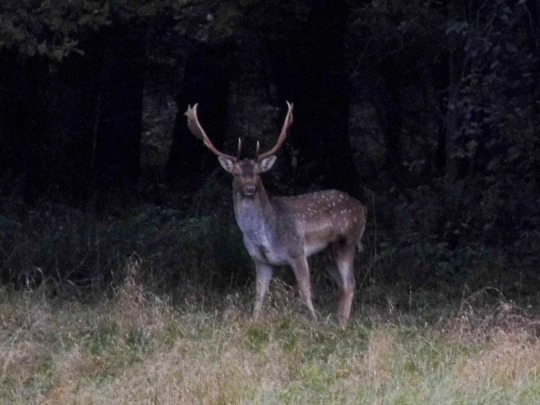


The European fallow deer (Dama dama)
#rut#European fallow deer#fallow deer#common fallow deer#Dama dama#deer animal#cute deer#deer rut#deerlife#deer breeding season#antlers#animal photoshoot#animal lover#animal photography#wild animals#animal#wildlife pictures#wildlife photography#wildlife#beautiful#beautiful photos#my photo#photography#photooftheday#naturecore#photoart#forest#woods#forest view
9 notes
·
View notes
Text






29/03/2024-Mallard at Lakeside, pony at Rockford Common in the New Forest, view at Rockford Common, Great Crested Grebes and chick at Lakeside it was great to see the parents and young birds on the water today, view at Lakeside and Fallow Deers in the sun in the New Forest on the way home this evening.
It was also great to see Siskins and Sparrowhawk really well, Tufted Ducks, Lesser Black-backed Gull and Peacock butterfly at Lakeside with Chiffchaff, Chaffinch, Dunnock, Meadow Pipit, Stonechats, Woodlarks and Cormorant seen on the walk at Rockford Common. Fantastic time spent outside on Good Friday.
#lakeside country park#rockford common#great crested grebes#fallow deer#siskin#sparrowhawk#meadow pipit#chiffchaff#chaffinch#peacock#butterflies#birdwatching#2024#home#wildlife#photography#stonechat#lesser black-backed gull#good friday#europe
8 notes
·
View notes
Text

there he is!
#there is even a melanistic deer in that herd#makes me wonder if they broke out from captive breeding#or color variants are just that common in fallow deer
7 notes
·
View notes
Text
Ok, now I'm really concerned that how to prevent rats isn't common knowledge like I thought it was. So, to anyone whose parents/guardians/adults didn't teach you, here's the basics of prevention*:
Rats, like you, need three things: food, water, and shelter. If they don't get these things, they don't bother sticking around. Access to food is probably the biggest draw, and the one you can do the most about.
Rats eat the same foods you do, and the same food that most pets eat. You don't want them to have access to this food, so:
Don't leave dirty dishes laying around, the smell will attract rats. Don't put leave dirty dishes in your bed room, or under the couch, or in your car, or whatever. Dishwashers are great, but if you don't have a functional one, and you're low on energy/executive function, at a minimum cover your dirty dishes with soapy water instead of leaving them out. Rats can't eat soapy food.
Work to minimize food waste, because the smell of tasty food in your compost or garbage will attract rats.
Don't put food scraps in your indoor garbage unless your garbage can is rat proof. Take it outside asap, to a rat-proof bin.
When composting, if you're composting food that would be attractive to rats (grains, fats/oils, dairy, meat) it's best to: bury the food down in the center of the pile, try out bokashi composting, or have a rat-proof composter. Generally people do tell you not to compost dairy and meat, but I do know that some people do it anyway.
Keep your grains & legumes in rodent proof-containers. Glass jars, metal trash cans, etc.
If you have dogs, put their food away at night. If you have birds or other animals that eat a seed-based diet, then it pays to make their food/enclosures inaccessible to rats as well. Cats are rat deterrents so leaving dry food out for them is probably the one exception.
Clean up spilled foods immediately.
If you have fruit trees (like those apple trees everyone has that were planted 3 or more decades ago) and notice that something besides a deer is eating them, it's really best to pick all the fruit. You probably can't eat it all, so giving it away is a good option. Compost the rotten/icky ones fallowing the advice above, or dig a hole and do some trench composting.
Rats also need water, which is another reason to make sure you don't have any leaks anywhere, and to not leave beverages out in open containers.
Beyond that, thoroughly looking around your house, inside and out, to make sure there's no access points. Vents can be covered with wire mesh, holes the size of a dime need to be patched (because mice exist, too). Keep vegetation clear from around the base of your house, and make sure there's no trees or shrubs growing close enough to your house that a rat could make the leap to your roof. Keep an eye out for tunnels near your house's foundation, because they will tunnel underneath.
Also, while I'm at it, for the love of your house's structural integrity, DO NOT store wood piles against your house. Termites people!!!
And yes, there's a reason why cats are such a common pet. Not only do they hunt rats, the very smell of a cat is enough to deter rats. Do not just get a cat for rat prevention though, only get a cat if you're going to provide it a good home and are able to take on the additional care tasks without over extending yourself. Getting a housemate that comes with a cat is a great alternative to getting your own cat (and I'm only halfway joking).
*because prevention is much easier and much less terrible than dealing with an infestation. Prevention is so, so, so much easier than getting rid of them, particularly because once they're there, they'll start eating other things that wouldn't have been enough by themselves to draw them in.
464 notes
·
View notes
Text
asking for definitely no reason absolutely no drawing in progress why do you ask? details of the types of deer below the poll
Blacktail- known for having large ears. common in western america
Whitetail- known for (gasp) having white tails. common in western america.
Elk- second largest species in deer family, although most people dont really think of them as deer. known for screaming. common in foresty america.
Reindeer- you know dasher and dancer and donner and vixen. found in mountainous northern america.
Coues- a specific type of whitetail. called "grey ghosts", they are known for being elusive. common in arizona mountains
Roe- small, reddish deer. has antlers that look actually pretty close to his. not native to america
Fallow- the deers with the spotted backs. usually kept deer, not necessarily wild in america. invasive to united states
Red- one of the largest deer species. they bark and roar. often dark red/brown with cream bellies. used as venison. have been found in texas, georgia, and pennsylvania
#alastor#hazbin hotel#hazbin#hartradio#hazbin fandom#its just.#their bodies are so different#and their antlers are all different shapes!#so yes im drawing him as a fucked up deer#but i have to commit to a type of deer#or risk making this ugly inaccurate deer amalgamation#hazbin alastor#alastor headcanons
91 notes
·
View notes
Text

Deercember Day Thirty: Megaloceros giganteus | Great Feast
Megaloceros giganteus, also known as the Irish elk, giant deer, or Irish deer, is an extinct species and is one of the largest deer that ever lived. Its range extended across Eurasia during the Pleistocene, from Ireland (where it is known from abundant remains found in bogs) to Lake Baikal in Siberia. The most recent remains of the species have been radiocarbon dated to about 7,700 years ago in western Russia. Its antlers, which can span 3.5 meters (11 ft) across, are the largest known of any deer. It is not closely related to either living species called the elk (Alces alces or Cervus canadensis), with it being widely agreed that its closest living relatives are fallow deer (Dama spp.). A handful of Irish elk depictions are known from the art of the Upper Paleolithic in Europe. However, these are much less abundant than the common red deer and reindeer depictions. The bones of the Irish elk are uncommon in localities where they are found, and only a handful of examples of human interaction are known. More information here.
References: Deer, Megaloceros Design 1, Megaloceros Design 2, Cat, Smilodon Design, Style Suggestion.
#Extinct representative for one of my three “free” days#I'll give myself a little treat and do something easy#I said#cave art should be fast#well to be fair it was fast#but boy this is challenging to do well#so I said fuck it and did it mediocre LOL#didn't even dabble into the wild proportions of Pleistocene art#idek if I could tbh#did learn some stuff tho so that was cool#SECOND-TO-LAST DAY#btw these species did not coexist so some significant liberties were taken for sure#I just needed two well-researched species for the period and this is how things went#Deercember#realHum#Art#Drawing#deer#deer art#paleoart?#Megaloceros giganteus#Irish elk#giant deer#Irish deer#Smilodon fatalis#saber-toothed cat#saber-toothed tiger
20 notes
·
View notes
Text
World building stuff Yay! Note that the only really sapient creatures in WCR are cats, humans, raccoons, wolves, and owls. Nothing else. Also, that the wildlife in WCR is going to be a mix of UK and Canadian wildlife.
Other Animals:
Possums: Not a threat, but also not really prey unless things are dire. Most common in Shadowclan territory but some have been known to end up in other areas. They are treated as caretakers of the land, eating crowfood and ticks. Basically, don't bully the janitors.
Foxes: Not that big but dangerous. They aren't sapient, but they are known to enjoy hunting purely for sport. Referencing but ultimately removing Midnight's line "all fox-talk is of kill". Their bites can easily get infected but they don't (usually) attack on site, only if a cat is stealing its "kill", if their babies are involved. Unfortunately, it is easy to set off a fox, and even a young one's bite is dangerous.
Badgers: Still pretty big creatures because I cannot get over the thought/image of huge badgers, and still dangerous. Not always an attack on site situation, but they are extremely territorial. A single Badger chased by a herd of Boars is what happens during the horrible attack in Twilight.
Boars: Large, extremely dangerous, they will attack on site. Tigerclaw saved Darkpaw (Darkstripe) from a boar on their first day out of camp together. They can be hunted, but it is not common whatsoever. Cherryshine (Dustpelt and Ravenpaw's sister) managed to take down a boar during her apprenticeship, giving her a warrior name early. Violet Dawn is the beginning of Boar Hunting, and is often prayed to before a hunt.
Bears: More of a Lake threat than a Forest one, and they aren't common. They do not attack unless given reason too, and it is not a fight a cat can win. Best course of action is to run and keep running.
Wolves: Language barrier isn't great but cats are not on a wolf's menu. There is peace amongst the 2 species even though communication is hard. A group in the mountains gets along very well with The Tribe of Rushing Water, The Tribe of Snowy Peaks, and The Tribe of Hollow Valley, since they don't see the cats as a threat to them.
Mountain Lions: Under any normal circumstances, not dangerous. Sharptooth is not a natural creature, and certainly not normal circumstances!
Deer: Depends on what kind! Red deer are not to be messed with, they're too big. Fallow deer are hunted sometimes but need very strong cats to do so. Their pelts are dried in the sun and used in nests. These cats are smarter than Canon. (The Tribe/Tribes however do not usually hunt them unless it is absolutely necessary. They hunt other animals, Fallow deer belong to the Mountain Lions). Muntjac deer are VERY commonly hunted, especially by Windclan. Water deer are hunted rarely by Riverclan, and one is caught during the Beaver Patrol.
Raccoons: Not normally dangerous! Raccoons speak a little and can be chatted with, but their teeth are dangerously sharp and their bites can get infected fast. Packs of them can be persuaded into helping, which is what Darktail does to Skyclan with Sharpclaw's help.
Owls: Can be dangerous if small kittens are about, hence why most families will not go on camping trips until a kitten is 1.5 moons old. There is 0 communication between Owls and Cats, only Owls and Wolves. ;)
A desperately hungry owl is a much worse threat, they will attack a fully grown cat or steal prey. Ambermoon is a victim of an Owl attack, and while she did manage to bring it down and kill it, it left her with some scars on her back and shoulders.
#warrior cats#warrior cats rewrite#wcr#world building#wc worldbuilding#badgers#possums#foxes#boars#bears#Not That Kind#wolves#mountain lions#deer#raccoons#owls#warriors
11 notes
·
View notes
Note
Ahh ty ty! Your so sweet omg- I have also never met any other squirrels lol.
Gotta love when I don't know my own species (epic sarcasm) BUT GOOD NEWS: Bottlenose Dolphin is confirmed thanks to (a rlly unsettling phantom) shift!
Your welcome! Anyways I have some questions, feel free to ignore hehe
1. What kin types are you questioning?
2. If you shift, what are your main shifts
3. Have you ever had the urge to go and hunt something down? or is it just me 😭
and Tumblr never gives me notifications if my asks get answered so I feel that lol-
-Vivi <3
CONGRATS ON CONFIRMING YOUR KINTYPE THAT'S SO COOL AAAAA!!!!/GEN It's always so nice to learn something new about oneself ehehe
Sooo... Kintypes. I am questioning some kind of canine that probably(???) lives in packs. I'm pretty sure it's either a coyote or a wolf!
I'm also questioning a deer theriotype!! I'm pretty sure it's either a fallow deer or a white-tail deer! It's really confusing tho... I feel like both species could be me rrr
And of course... There's the aquatic one. Could be lots of animals. But it's probably a fish. A CARP. A COMMON CARP AAAAA that's way too funny to me. Big black scary dog, wild canine that ruthlessly hunts down its prey, a majestic deer that strolls through the forest like a king, and a carp. CARP
IDK IT'S FUNNY TO ME AAA
#alterhuman#therian#theriantropy#caninekin#dogkin#wolfkin#coyotekin#deerkin#fishkin#THANKS FOR THE QUESTION AHDJDIKDSKKDKDLF
11 notes
·
View notes
Text
@hookedhobbies I told you I would write a weird review of each deer species I've worked with the next time I was drinking, so here we go.
It is neither good nor coherent, but should give you some Vibes for each of them.
Eld's Deer - overall they were chill and didn't come super close while I was in the field. Except for one stupid little shit that thought all humans needed to die. I wish I could remember his name, but we always had to have one person on the lookout for him so the other could escape if needed. Cool little deer with a unique curve to their antlers, with a prominent brow tine.
Pere David's Deer - One of my favorite deer species I've worked with. Very strange creatures. Also known as the Milu - or creature of four parts (I believe the horse, ox, deer, and deer?) “The hooves of a cow but not a cow, the neck of a camel but not a camel, antlers of a deer but not a deer, the tail of a donkey but not a donkey.” per Wikipedia. They do look ungainly. When I was working with them we had a cow that was relentlessly harassed by the rest of the herd so we knocked her down for an exam and it turned out she had a really gnarly abortion that had partially mummified and was infected. Nothing prepares you for the smell of septic fetus as you're pulling a jaw bone out of a 400 lb deer.
Bactrian Deer - I actually don't remember a ton about these guys - we had a large herd in one of the several thousand acre pens, so I didn't see them a lot. Physically very similar to elk or red deer. They seemed fairly wild and majestic. There was one that had been orphaned and bottle raised that we unofficially called Bullet. Because we would likely have to shoot him one day to aggression. (Bottle raised large ungulates tend to uh. Not Be Normal.)
Sika Deer - don't remember much about them in general, just leaping out of an F150 at 15 miles per hour to catch a fawn that needed an ear tag. Relatively small sized deer, spotted, pretty cute.
White-Tailed Deer - Like if a labradoodle became a deer. I don't really mean that as a compliment. Not very smart, but friendly and loved being scratched. Delicious if properly seasoned.
Fallow Deer - head empty, but very friendly. Easily trainable with food. There is a feral population bearish where I live. We came upon them once while training some off track thoroughbreds. That was a ride.
Axis Deer - like the stag from Bambi in personality, but not in stature. Majestic, better than you, would not Deign to interact with a common human. Also flightly AF. Prone to stress, there was once a massacre.
Barasingha - my beloved. Gigantic, improbable ears. Made for living in swamps. Make very silly snort scream squeak noises. Gorgeous red orange coloring. EDIT I forgot to add in that I just fucking love their scientific name: Rucervus duvaucelii. It's fun to say.
Elk - probably my favorite. Forest guardian spirit, neither benevolent nor malevolent. Hold an intelligence that I did not see in the other deer (maybe the pere David's, but honestly they trended toward the eldritch). The girls I worked with were all trainable, but only if they saw the benefit to what we were doing. It helps that the oldest cow loved me and would follow me along the fence line if I was doing other work.
4 notes
·
View notes
Text
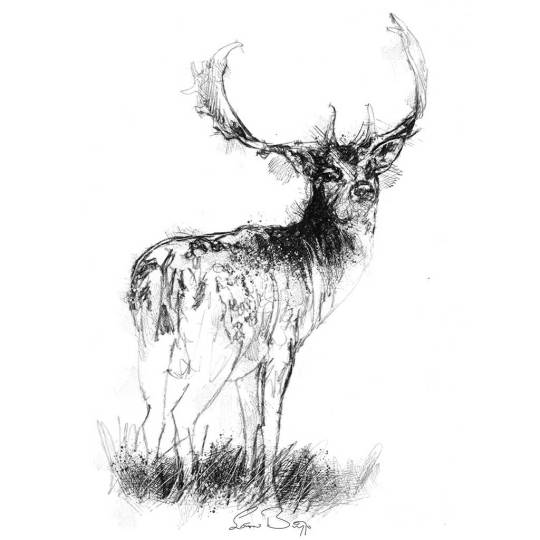
Fallow deer sketch | Limited edition fine art print from an original drawing.
The European fallow deer, also known as the common fallow deer or simply fallow deer, is a species of ruminant mammal belonging to the family Cervidae. It is historically native to Turkey and possibly the Italian Peninsula, Balkan Peninsula, and the island of Rhodes in Europe.
My sketches start life as hand-drawn graphite images made on cartridge paper. I often work on these with charcoal, oil pastel or Caran d'Ache to create the look I'm after. The artwork is then scanned and finessed digitally ready for fine art printing. This process often referred to as Giclée printing uses the highest standard of printing methods to give gallery quality results that maintain all the details of the original sketch.
The graphite pencils I use are Faber-Castel, the oil pastels are Sennelier and the china-graph is Caran d’Ache. The inks are pigment based archive quality (100years+). The heavyweight specialist papers I use are of the best professional quality having a wonderful surface designed specifically for fine art drawings and illustrations.
Very limited editions with only ten per size printed.
All artwork is signed and includes a certificate of authenticity.
The A5 are 5.8" x 8.25" (14.8cm x 21cm)
The A4 are 8.25" x 11.7" (21cm x 29.8cm)
The A3 are 11.7" x 16.5" (29.8 cm x 42cm)
The A2 are 16.5" x 23.4" (42 cm x 59.4cm)
Frames not included in price.
Free shipping on artwork to UK destinations.
#variable#BlackandWhite#Wildanimals#art#deer#drawing#fallow#gicleé#illustration#print#seanbriggs#sketch#A5#A4#A3#A2#Original
5 notes
·
View notes
Text
Deer have been on human minds and in human lives for eons. Between 120,000 and 108,000 years ago, Homo erectus relied on deer for food on the island of Java. A Neanderthal living in what is now Germany carved chevron shapes into a deer bone 51,000 years ago. Between 33,000 and 30,000 years ago, Paleolithic people painted on the walls of Chauvet Cave in what is now France. Among the animals they left for us to ponder are red deer, reindeer, and Megaloceros—the largest deer to have ever lived.
Deer have appeared in the art and mythology of the ancient Egyptians, Greeks, Celts, Hindus, and Chinese, for whom deer represent longevity and prosperity. They are prominently represented in medieval European heraldry, mythology, and culture. The deer is a sacred symbol of the Maya world and its image appears throughout their culture. Maya mythology holds that it was a stag, using his hoof, who formed the sexual organs of the moon. The Maya sacrificed deer to their gods and used deerskin to record the pre-Columbian Maya codices. To this day, many Maya people have the surname Ceh, which means “deer” in the Mayan language.
Across cultures and time, people have revered deer as symbols of spiritual authority. A deer’s antlers, resembling a crown, extend beyond its head and body, connecting it to the heavens. Those same antlers drop off and regrow each year, making them symbols of regeneration. In Christian iconography, the stag serves as a symbol for Christ, conveying piety, devotion, and God’s care for his children. Deer star in countless folk tales and fables. In 1942, Walt Disney Studios released the animated film Bambi, which has helped shape North American perceptions of deer ever since. Through it all, human hunters have prized deer for their meat.
Deer are special. We are not talking about a plague of locusts, rats, or venomous snakes—we’re talking about deer. And whenever the words deer and problem come together, many people have big feelings.
Both Indigenous knowledge and Western science have long recognized that deer can have big impacts wherever their predators are few, causing a trophic cascade—the ecological term for changes throughout a food web. Aldo Leopold, the first professor of game management in the United States, famously observed a century ago how overabundant deer on Arizona’s Kaibab Plateau degraded the habitat to the extent that their population collapsed. “I now suspect,” he wrote in his seminal A Sand County Almanac, “that just as a deer herd lives in mortal fear of its wolves, so does a mountain live in mortal fear of its deer. And perhaps with better cause, for while a buck pulled down by wolves can be replaced in two or three years, a range pulled down by too many deer may fail of replacement in as many decades.”
Tara Martin has been studying the effects of overabundant deer for more than 15 years. Because some islands in the Salish Sea have deer and some don’t, they provide a natural experimental setup to measure deer’s effect on the environment. Martin has found that palatable plant species cover, richness, and diversity are 92 percent lower where deer are common and 52 percent lower where deer are scarce (less than 0.08 per hectare) compared with areas with no deer at all. On some islands, native black-tailed deer and exotic fallow deer occur at densities of over 20 per square kilometer. The resulting loss of understory means the loss of habitat for numerous bird species, which rely on the first 1.5 meters above the forest floor for cover, nesting sites, and food such as flowers and seeds.
“There are over 300 species in this ecosystem that are being negatively impacted by overbrowsing,” Martin says. “Many of those are plants, but it also includes bumblebees and songbirds, and our amazing alligator lizard and sharptailed snake species that are at risk of [local] extinction.”
— Giving Bambi the Boot
#brian payton#giving bambi the boot#history#prehistory#animals#zoology#early humans#christianity#environmentalism#ecology#wildlife conservation#extinction#paleolithic period#germany#france#china#mesoamerica#maya#usa#native americans#chauvet cave#deer#red deer#reindeer#megaloceros#homo erectus#neanderthals
4 notes
·
View notes
Text

The European fallow deer (Dama dama), also known as the common fallow deer or simply fallow deer, is a species of ruminant mammal belonging to the family Cervidae. It is historically native to Turkey and possibly the Italian Peninsula, Balkan Peninsula, and the island of Rhodes in Europe. Prehistorically native to and introduced into a larger portion of Europe, it has also been introduced to other regions in the world.
#fallow deer#beautiful#beautiful things#beauty#nature#rain deer#beautiful animals#animals#snowing#snowfall
2 notes
·
View notes
Text
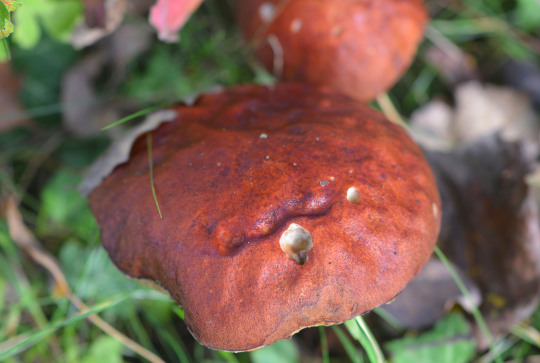


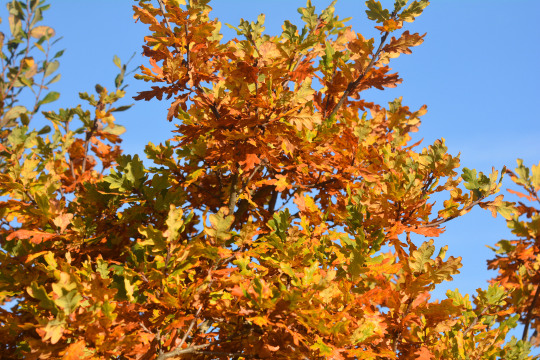
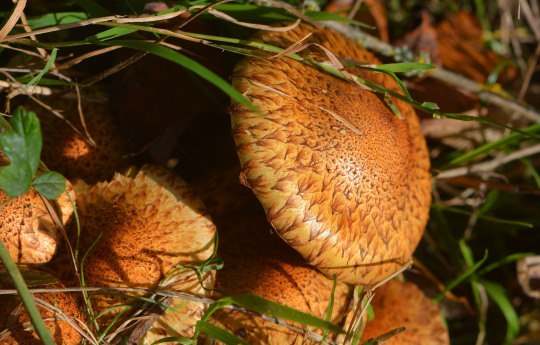


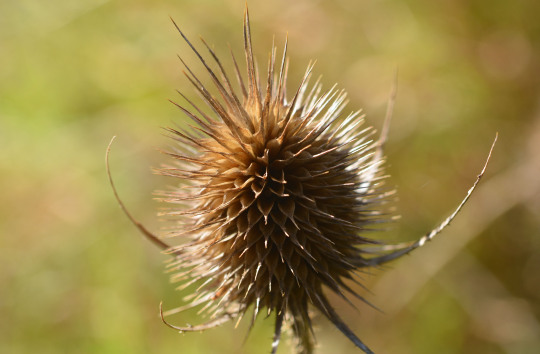


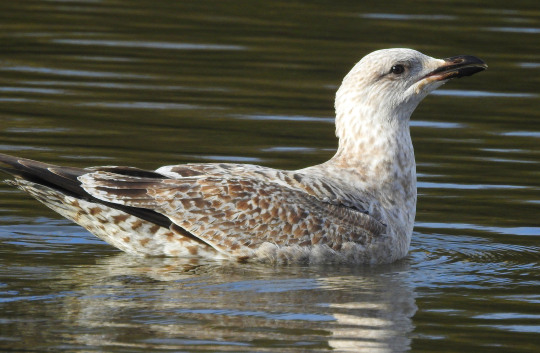
Eleven of my favourite photos I took in November 2023 and month summary
The photos are of; mushroom at Lakeside Country Park, sunset at Milkham in the New Forest, Mute Swans at Weston Shore, autumn leaves at Lakeside, shaggy scalycaps at Lakeside, more autumn leaves at Lakeside, Mallard at Lakeside, teasel at Lakeside, Fallow Deers at Bolderwood in the New Forest, ivy in Winchester and Herring Gull at Lakeside.
November was a month of splendour for me, from the spectacle of watching a Short-eared Owl quartering at Farlington Marshes to the vibrant autumnal colour that blanketed the landscape. It was another very strong month of observing mushrooms for me from amethyst deceiver in a very strong year I've had for them to shaggy scalycap and many more enjoyed. Flowers such as gorse, wild carrot, white deadnettle and daisy hung on to bring some nice colour to my walks still with hawthorn berries, rose hips and memorably lots of holly ever present. The nights drawing right in has brought some special sky scenes to enjoy with it being a great month of moons and rainbows for me too. There was still a sprinkling of insect sightings with the likes of Red Admiral butterflies and Common Darter dragonfly in sunnier parts of the month, with it being another great month of spiders especially the Long-bodied Cellar spider seen well many times at home where it's been notable to see Grey Silverfish too.
The return of Redwings and Fieldfares easing us into winter has been notable in my month's birdwatching, with Brent Geese too. It was a special day at Farlington Marshes at the heart of the month also getting amazing views of Bearded Tits and Marsh Harrier. On my Lakeside walks I have gone nicely into the exciting birding days of winter with different birds being about, most notably the two redhead Goosanders which it has been an honour to see a few times so close to home. Cormorant, Kingfisher, Mistle Thrush, Grey and Pied Wagtail, Siskins and returning Tufted Ducks have been other Lakeside highlights this month. Long-tailed Tit and Kestrel were other standout species this month. For mammals across the month at Lakeside and in the New Forest I was treated to gripping views of charming Roe and Fallow Deers seeing a young Roe at Lakeside and rutting action in the forest with the Fallows. I saw a fair few Grey Squirrels and enjoyed New Forest pannage pigs again too.
#kestrel#long-tailed tit#tufted duck#goosander#bearded tit#marsh harrier#short-eared owl#brent goose#mute swan#herring gull#autumn leaves#shaggy scalycap#amethyst deceiver#2023#outdoors#new forest#hampshire#england#uk#earth#nature#world#happy#photography#birdwatching#fallow deer#roe deer#mammals#november#europe
8 notes
·
View notes
Photo

(Oh) Deer, from the Tête d’Or park in Lyon, I think a European fallow deer.
Fact from Wild Life trust : Fallow deer are native to Asia and were introduced into the UK by the Normans around the 11th century. They subsequently escaped from deer parks and were intentionally released into hunting forests. Today, they are widespread and the most common deer in England.
4 notes
·
View notes
Note
How valuable a fief would Queenscrown be for a newly made lord?
After I wrote about Fixing Up Dragonstone, you want me to write another Medieval Home and Gardening post, this time Queenscrown edition?
The problems with Queenscrown are obvious: most of the houses have collapsed, the inn has only two standing walls, the oak doors of the tower are too warped to close completely (though the rest of the tower appears in good shape). So any new lord looking to attract people to the village is going to have to invest some money into rebuilding.
Jojen enumerates the advantages of the Queenscrown area in Bran III ASOS: “This is good land." Jojen picked up a handful of dirt, rubbing it between his fingers. "A village, an inn, a stout holdfast in the lake, all these apple trees . . . but where are the people, Bran? Why would they leave such a place?” While Bran says the inn was never much of an inn, that there was even a small one, partially made of stone (stone structures are rare in these villages), with a common room indicates there was some business from travelers/traders along the Kingsroad. The apple trees could provide some income, but as Bran’s chapter shows, the fruit is only available during the warmer seasons (which, unless seasons by the end of canon are changed to resemble those on earth, can last for years), and thus possibly unreliable (there’s possibly a business for making preserves). The thick oak trees are a potential source of timber, maybe to help rebuild the inn and some of the cottages. The lake provides fresh water, although there’s not mentioned to be fish/frogs for food there. At least some deer are around to make venison. From Queenscrown to the Wall are grasslands, “fallow fields…high meadows”, which do have value if someone were to replant or graze their flocks there come spring.
In short, I wouldn’t say Queenscrown is one of the wealthiest potential holdfasts (it’s not located near a river, near a mine, any crossing point for tolls) but has assets in its fertile soil (assessed as good by crannogman Jojen, and shown to support many apple and oak trees), its freshwater lake, the nearby fields and meadows, and its location near the kingsroad that has attracted travelers enough for an inn. If the new lord is willing to put in the work, I’m sure Queenscrown would yield more than subsistence once the wildling raids/War for the Dawn have ended. Considering 3 chapters have taken place there (2 of Bran and 1 of Jon, which may foreshadow their endgames as kings), and there are many references to how peaceful/fertile yet lonely/haunted it is without its people, it’s very likely Queenscrown will be resettled by the end of the series.
21 notes
·
View notes
Note
What type of deer are usually found within the valley? Are they mindful?
As OFND’s primary storyline is set roughly around the border that America shares with Canada, a lot of the creatures found in the narrative are what you might find around this area! With a few exceptions here and there for the sake of fantasy lol
Since the valley has been primarily claimed by the Fourtrees Fealty, not many mindful creatures wander into the territory unless they’re actively ready to face roughly a hundred or so cats that have been living there for generations, primed for war at the literal drop of a hat, with weapons and agriculture and alliances all at the ready. Most of the animals preyed on are mindless! Very rarely will a fealty cat take the life of a mindful creature for sustenance; it’s a practice that is highly looked down upon. So all (most) of the creatures that are used for food are mindless.
The most common deer species found in the fortress valley are: White-tailed deer, red deer, fallow deer, Mule deer, Moose, Caribou, and Wapiti!
4 notes
·
View notes